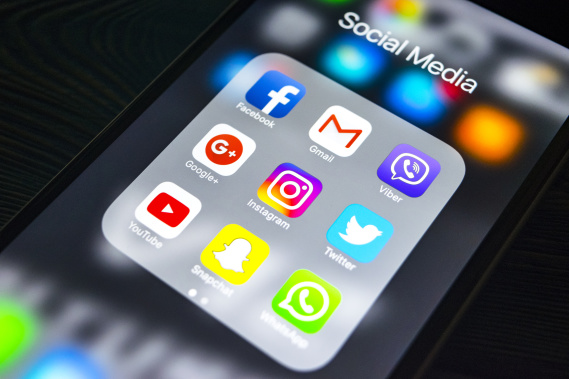
Radio advertising was still a relatively new concept in the 1920s. Radio advertising was still in its infancy. Some companies and agencies took advantage. Radio ads required creativity and imagination, which is not the case with print advertisements. They targeted specific people with specific words and images. This allowed advertisers to convince consumers to buy their product.
As the industry grew in popularity, companies started to hire musical acts to perform for commercially sponsored programs. The medium gained popularity as more people bought radios to listen to it. By the late 1920s, most stations carried commercially sponsored programming. The first advertisers were huge corporations.
Advertisers started to test the effectiveness of radio marketing tools. Remick's Music Store bought a large ad that promoted KFC in a local newspaper in March 1922. Later that year they swapped sponsorships for a weekly program.
Other companies saw the value of radio advertising and embraced it. Queensboro Corporation of New York and American Telephone and Telegraph Company, (AT&T), were some of the first radio marketers. Although these companies weren't among the first businesses to advertise on the radio, they were some of the most important.

As the radio industry progressed, smaller groups of stations began to cover areas that were sparsely populated. These smaller stations were often called "networks" because they allowed advertisers to reach a larger audience.
Radio advertising became very lucrative. By 1929, American companies spent $3 billion on advertisements. But, the Great Depression devastated the industry. This was due to several factors.
Advertisers believed that radio ads would convince customers to buy their products. The medium's high observability was one reason. It was also a relatively cost-effective way to reach a target audience.
Another reason was that radio was considered a relaxing and entertaining form of entertainment. Listeners could tune on at any time. During the Great Depression, many consumers decided that the best way to spend their money was on material goods.
Advertisers tried to convince consumers to buy their products over those of their competitors. Advertisers claimed the products were safer, better, or easier to use. During the 1920s, Americans had more money and believed their success was dependent on their ability to buy more material goods.

The 1920s represented a major shift in American identity. As radios became more common, advertisers were able to reach more people. To increase brand awareness, companies also use radio advertising. Some companies employed professional window dressers, while others hired men to wear sandwich boards on the streets.
Advertising was initially focused on the testing of premium offers in the early years. They also monitored the frequency and distribution of their radios. After they realized that their products were becoming very popular, they continued to test them. Some radio stations stopped carrying commercials until the middle of the 1920s.
FAQ
What is advertising's basic purpose?
Advertising isn’t about selling products.
Advertising is communicating ideas and values. It's about changing minds and attitudes. It's also about creating relationships.
It's all a matter of making people feel good.
If you don't understand your customers' needs, you can't market to them.
So before you start any advertising project, you should first understand your customer's needs and wants, and buying habits.
Then you can design ads that will resonate with them.
What are the basics of radio advertising?
You should understand how the different types of media affect each other. Remember that all media types are complementary, not competing.
Radio is best utilized as an extension to TV advertising. Radio can complement TV advertising by reinforcing key messages, and providing additional information.
For radio listeners, TV commercials can often be too long. Radio ads are usually shorter and less expensive.
What is affiliate marketing?
Affiliate marketing can be described as an online business model. You earn commissions by referring customers who purchase products and/or services on other websites. The product owner pays you when someone buys from you.
Referrals are the foundation of affiliate marketing. People don't need to do anything to purchase from you. All you need to do is refer them to the website.
You can make money without doing any hard selling at all. It's equally easy to sell and buy.
It takes just minutes to set up an account as an affiliate.
The more people you refer, the more commission you will receive.
There are two types.
-
Affiliates who own their websites
-
Affiliates working for companies offering products or services.
What is the best way to advertise online?
Internet advertising is an important part of any business strategy today. It allows companies reach potential customers at a very low cost. There are many kinds of internet advertising. Some advertising is free and others are paid.
There are many other ways to advertise online. Each method has its advantages and disadvantages.
What is the cost of advertising on social media?
Social media advertising is expensive if you choose to take this route. You will be charged monthly based on how much time you spend on each platform.
Facebook - $0.10 per 1,000 impressions
Twitter - $0.20 Per 1,000 Impressions (if you tweet).
Linkedin - $0.30 for 1,000 impressions if your send out invitations
Instagram - $0.50/1000 impressions
Snapchat - $0.60 per 1,000 impressions ($0.40 per user)
YouTube - $0.25 Per 1,000 Views
Tumblr Text Posts - $0.15 Per 1,000 Impressions
Pinterest - $0.05 per 1,000 impressions per month
Google + - $0.15 - $0.20 per 1 Million Impressions
Tumblr $0.15- $0.20 for 100,000 impressions
Vimeo - $0.20- $0.25 per 10,000 impressions
Soundcloud: $0.20-$0.25 Per 1 Million Plays
StumbleUpon - $0.20 -$0.25 per 1 billion pageviews
Digg - $0.20 to $0.25 per 1000 diggs
Reddit: $0.20-$0.25 for 1000 comments
Wordpress $0.20-$0.25 per 500 Comments
Flickr - $0.20 -- $0.25 per 5,000 photo uploads
What is an advertiser buyer?
Advertising space is purchased by an advertiser on TV, radio and printed media.
Advertisers pay for the time their message appears.
They don't necessarily seek the best ad; they want to reach their target markets with the most effective ad.
The advertiser may have specific demographic information about their potential customers, such as age, gender, income level, marital status, occupation, hobbies, interests, etc.
Advertisers can use these data to determine the best medium for them. They might decide direct mail is more effective for older people.
Advertisers also evaluate the competition. If there are similar businesses nearby, they might choose to place their ads near those competitors.
Advertisers must also take into account the size of their budget as well as the time it will take to spend the money before it expires.
Is it possible to get traffic for free?
Free Traffic refers to the traffic that comes directly from organic search results without paying for ads. This type of traffic is called natural or organic traffic. There are many ways you can get free traffic.
Article marketing is one of the most effective ways to get free traffic. This is because it has a very low cost per click (CPC). Paying ads can be more costly than CPC. Article marketing can also be referred to content marketing.
Social Media Marketing - These social media sites, such as Facebook, Twitter or LinkedIn, allow you to advertise your business. These sites allow you to update, share photos, and develop relationships with people who could become customers. Many businesses pay to advertise on social media sites because they want to reach more people at a cheaper price.
Blogging-Blogging is another great way of generating free traffic. You'll attract visitors if you write quality content that people enjoy reading. You can start to monetize your blog with the sale of products or services after you have attracted readers.
Email Marketing - Although email marketing has been around since before the advent of the Internet it is still one of the most effective ways to drive traffic and sales to your site. Sending emails regularly is a good strategy to grow your list of subscribers and eventually sell them something.
Statistics
- This means that at least 50% of an ad needs to be shown on the screen for at least one second. (quicksprout.com)
- Worldwide spending on advertising in 2015 amounted to an estimated US$529.43 billion. (en.wikipedia.org)
- It's 100% reliant on your website traffic. (quicksprout.com)
- Nonetheless, advertising spending as a share of GDP was slightly lower – about 2.4 percent. (en.wikipedia.org)
External Links
How To
How can you advertise on a billboard
Although billboards have been around since late 1800s, they first became popular in World War II as they were placed along highways and roadsides. Text advertising is the most common form of billboards, but some include artwork or photographs. Many billboards are static. Others display messages that change periodically, such a weather forecast, stock price, stock scores, political events, or stock market prices.
While most billboards are outdoors displays, indoor versions are available. Outdoor billboards usually face traffic passing by them at least several times per day, while indoor ones may only be seen once every few years. The most common outdoor billboard style is the "cubic". It is made from three layers -- two sheets each of glass and a layer with fiberglass mesh. This design allows air to circulate through the billboard, keeping it cool in hot weather and warm in cold weather.
Billboard Advertising Inc. owns many of North America’s largest billboard advertising agencies and pays advertisers to display their ads on its billboards. These companies then offer space on their billboards for advertisers. Advertisers buy these spaces based on how much they want to spend on advertising. These advertisers often choose the best location for their ads depending on how many people they are likely to see.
Billboard Advertising Inc. is licensed to sell ad space and to erect signs in cities. Some cities allow billboards anywhere; others restrict them to certain areas. Chicago for instance requires billboards not to exceed 1,000 feet from any highway. Other cities stipulate that billboards must be at least 500 feet away from any school or church.
Billboard Advertising Inc. has agreements to promote products and/or services throughout the United States.